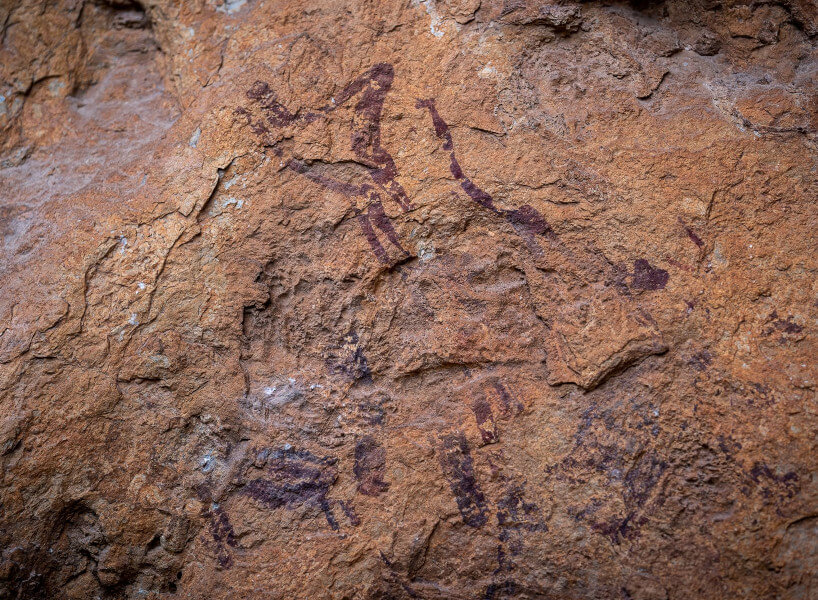The intense torrential rains caused by the latest DANA (Isolated Depression at High Levels) that affected the Valencian Community in October 2024 not only caused damage to infrastructure and crops but, unexpectedly, marked a milestone for Valencian archaeology. In a ravine near the municipality of Chulilla (Falfiguera), in the region of Los Serranos (Valencia), the collapse of part of a rock wall revealed a previously unknown set of rock paintings that could date back to the Neolithic period or even earlier.
The discovery was made by agents inspecting the known paintings found in the late 1990s, who noticed unusual shapes and pigments on a wall that had until then been hidden by a thick layer of sediment and vegetation. Once the local authorities were alerted, a team from the Heritage Service of the Generalitat Valenciana and the Department of Prehistory at the University of Valencia was dispatched to the site.
The initial report confirms the authenticity of the representations and indicates that they are schematic paintings in the Levantine style, depicting human figures, animals (especially goats), and geometric symbols. The technique, the use of reddish pigment, and the compositional layout are consistent with other Levantine sites.
This discovery strengthens the archaeological importance of the area, as Levantine rock art, declared a UNESCO World Heritage Site in 1998, is one of the most exceptional collections of open-air prehistoric art in Europe. It extends along the Mediterranean arc of the Iberian Peninsula, from Catalonia to eastern Andalusia, with especially notable sites in the province of Castellón (such as the Remigia Cave and the Valltorta Ravine), Teruel, Albacete, and Jaén. In this context, the paintings of Chulilla gain new significance, contributing to the mapping of rock art in the Valencian Community and providing new insights into the evolution of symbolism, ritual practices, and the way of life of Neolithic communities.
Furthermore, the discovery highlights Chulilla’s role as a unique location, not only for its scenic and geological value but also for its hidden cultural richness. Until now, the rock paintings in the area were scarce and relatively unknown compared to other parts of the region. With this new finding, Chulilla becomes an emerging reference point in the study of Levantine rock art.
The surroundings of Chulilla, already popular among hikers and lovers of active tourism, find in this type of discovery a powerful boost for the development of cultural tourism. The fusion of nature and archaeology offers a unique experience that allows visitors to connect with the remote past in a natural setting of great beauty. The trails that cross the ravines, gorges, and vertical walls of the Turia Gorges Natural Park not only invite scenic contemplation but also reflection on how humans, for thousands of years, have used these same spaces as canvas, sanctuary, and symbolic communication medium.
In a world dominated by the digital, finding art over 7,000 years old in a rock shelter is a tangible reminder of our common roots. Rock art is not just a testament to the past: it is also a living heritage that connects us with the landscape and with the people who inhabited it millennia ago.
The discovery in Falfiguera opens new lines of research, conservation, and public engagement, which will require collaboration between archaeologists, conservators, institutions, and the local community. Above all, it reminds us that the oldest art in our history still lives on in stone, waiting to be rediscovered by time… or by the force of a storm.
Bibliographic References
- Beltrán Martínez, A. (1982). Levantine Rock Art. CSIC, Madrid.
- Villaverde Bonilla, V. (2006). Rock Art in the Valencian Community. University of Valencia.
- UNESCO (1998). Rock Art of the Mediterranean Basin on the Iberian Peninsula. https://whc.unesco.org/en/list/874
- Ripoll López, S. (1992). Rock Painting in Spain. Istmo Editions.
